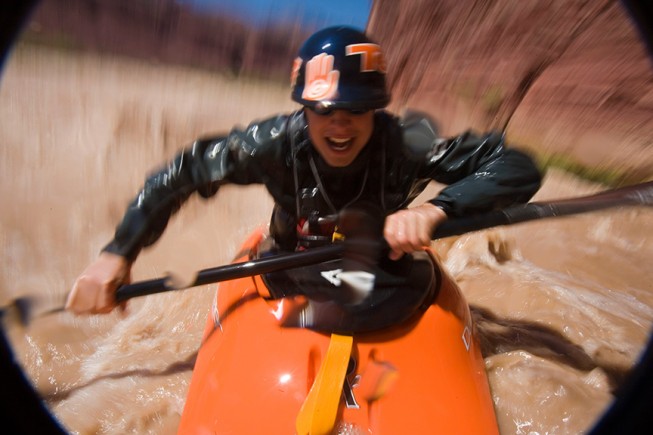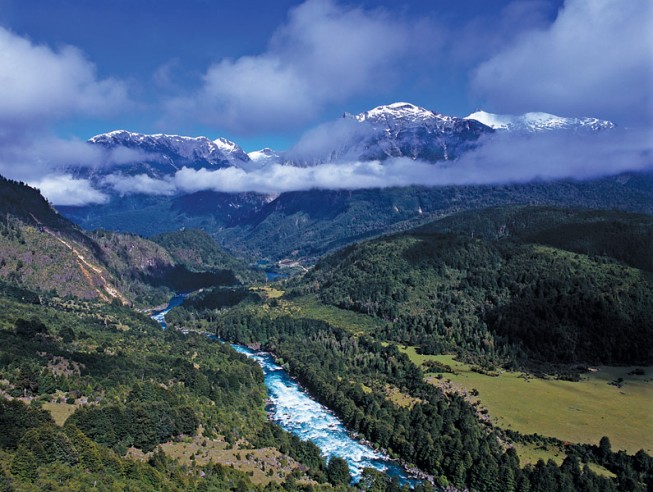World’s Top 10 Whitewater Kayaking Spots


Where the Best Paddlers in the World Play
1) Zambezi River, Zambia
In 1855 Dr. David Livingstone hired natives to paddle his canoe to the brink of mile-wide, 364-foot-high Victoria Falls, billed as the greatest curtain of falling water in the world. Modern-day river runners can do the same both above and below the falls. Above the falls are miles and miles of tranquil kayaking waters inhabited by everything from elephants to hippopotami. Below lies the infamous Batoka Gorge, creating the border between Zimbabwe and Zambia and offering some of the best Class IV-V, big-water whitewater kayaking in the world. The stretch has so many rapids they aren’t even named…just numbered. Day trips are offered on the first 23 rapids, or you can go for an extended stay in the bush—a la Livingstone—for up to seven days.
2) Ottawa River, Canada
Competitors at the Ottawa’s World Freestyle Kayak Championships called it “the best freestyle river in the world.” For good reason. In summer, flows average around 15,000 cfs and a warm 70 degrees F. Two separate channels share the same put-in and take-out, making the five-mile stretch a kayaker’s dream: the Main Channel is a big water run with towering waves and giant hydraulics, while the more technical Middle Channel lets you zig-zag downstream. In all, you’ll float through a paddling paradise of 175 islands, harboring rapids, waterfalls and sandy beaches. At the Lorne Rapid, a wave called Garberator forms at lower lever, replaced by a monstrous world-classic called Buseater at higher flows.

3) The Alsek/Tatshenshini, Alaska
To experience Jack London’s Call of the Wild in the world of whitewater, head north, like he did, to Alaska and British Columbia’s Alsek/Tatshenshini watershed. Here you’ll encounter everything from bears and fresh Alaskan blueberries to spawning King salmon and giant standing waves. Of course, one of the most unique things about the Class III 180-mile journey down the Alsek or 130-mile jaunt down the Tatshenshini are the icebergs that accompany you and your kayak all the way to the Pacific Ocean. You can even break off some of their glacial ice for your drinks as you listen at camp, under the lights of the aurora borealis, for the call of the wild.
4) Sun Kosi, Nepal
David Allardice, owner of New Zealand’s Ultimate Descents, knows a good thing when he finds it. That’s why the Sun Kosi, meaning “River of Gold,” has been the mainstay of his Himalayan commercial rafting and kayaking operations since he first started running rivers in Nepal in 1984. The 170-mile crown jewel section, which courses through the Mahabharat Lekh mountain range on its way to the Ganges, is easily accessed from Kathmandu and can be done in six to 10 days. Paddlers will find white sand beaches for camping, big water Class III-IV rapids reminiscent of the Grand Canyon, and plenty of monkeys to eagerly listen–and contribute–to your whitewater tales around the campfire.

5) Pacuare River, Costa Rica
For a quintessential jungle run, head to Costa Rica’s parrot-filled Pacuare River, which flows into the Caribbean from the Costa Rican highlands. That’s where Hollywood went to get authentic jungle footage for its movie Congo, and that’s where kayakers head for 32 miles of Class III-IV, crystal clear whitewater. Trips range anywhere from one- to three-days, with a thatched-roof, bird-chirping lodge awaiting overnight stayers just a coconut’s throw away from the river. And for experts lies the Class V Upper Pacuare section upstream.
6) The White Nile, Uganda
Head here to polish your playboating skills, pure and simple. Located below Bujagali Lake, about five miles from Jinja, where the Nile first flows from Lake Victoria (claimed by John Speke in 1862 to be the river’s source), the whitewater-filled stretch features nearly 20 miles of the some of the best, most playful big-water rapids in the world, including Nile Special, arguably the world’s best big water surf spot. Bonus: strapping your kayak to the back of a moped for the shuttle back.

7) Grand Canyon, Arizona
When John Wesley Powell first ran the Grand Canyon in 1869, few realized the rapids that caused him such consternation would make it one of the world’s top whitewater runs a scant century later. Rapids such as Crystal and Lava Falls are topped only by the canyon’s beauty as the Colorado River carves its way through time. To do the whole 280 miles by kayak takes anywhere from 10 to 23 days, depending on if you have motor support. And if you go with an outfitter, you’re guaranteed gourmet fare that is a far cry from the salted pork and flour rations of Powell’s rafting days.
8) North Johnstone River, Australia
While most people head to Cairns, Australia, to dive the Great Barrier Reef, another site on UNESCO’s World Heritage list awaits paddlers just a rugby ball’s kick away. Thundering through one of the oldest rainforests in the world—one that has repeatedly escaped the ravages of ice ages striking farther north—the North Johnstone cuts through Crocodile Dundee country for more than 50 miles before merging with the Pacific just south of the Barrier Reef. Along the way paddlers encounter towering palms, secret aboriginal caves and countless Class IV-V whitewater that even Dundee himself would have trouble negotiating without the help of a Fosters-drinking guide.

9) Futaleufú River, Chile
Ask any river runner worth his or her weight in neoprene what is the best whitewater river in South America—or for that matter, the world—and the answer will invariably be the same: Chile’s Futaleufú. Described as blending the scenery of California’s Yosemite with the rapids of the Grand Canyon and water color of the Caribbean, the river crashes through the Andes on its way to the Pacific from Chile’s border with Argentina. Its upper Class V+ section has humbled expert kayakers from around the world, while an easier 22-mile lower stretch has exposed others to some of the best paddling on the planet. There’s a reason it’s called “the Greatest Whitewater on Earth.”
10) Middle Fork of the Salmon River, Idaho
From the Boundary Creek put-in to its confluence with the Main Salmon 100 miles away, the Middle Fork of the Salmon River offers some of the most remote whitewater in the contiguous U.S. The river threads its way through the 2.7-million-acre Frank Church River of No Return Wilderness–the largest roadless tract of land in the contiguous United States–culminating with the infamous Impassable Canyon, named by Lewis and Clark when they passed through the area in the early 1800s. The same Class III-IV rapids they deemed impassable, however, draw river runners in droves. The best thing about the Middle Fork, of course, isn’t its solitude or kayak-soaking rapids. It’s the nine riverside hot springs scattered throughout the trip that can make you look like a well-ripened prune after each day of paddling.
Related Posts
Sign up for Our Newsletter






